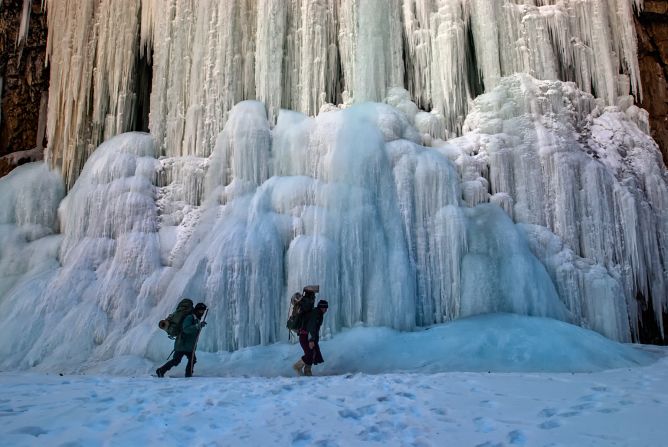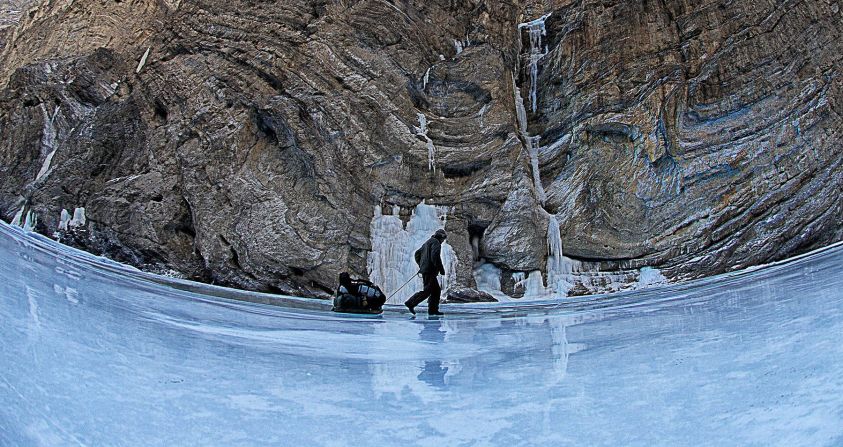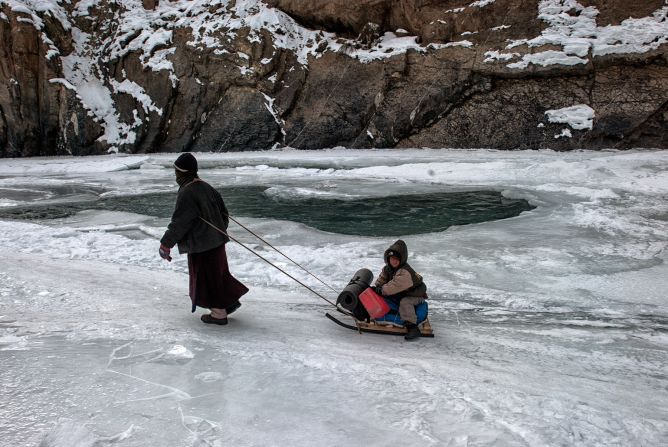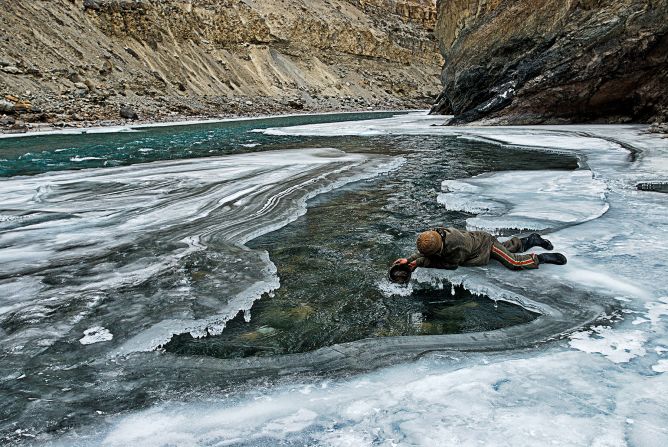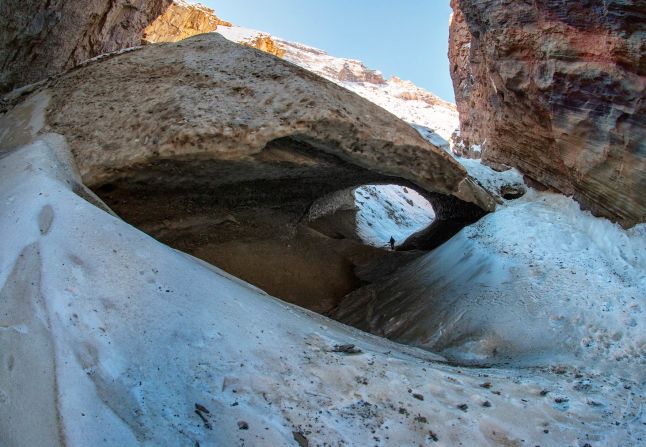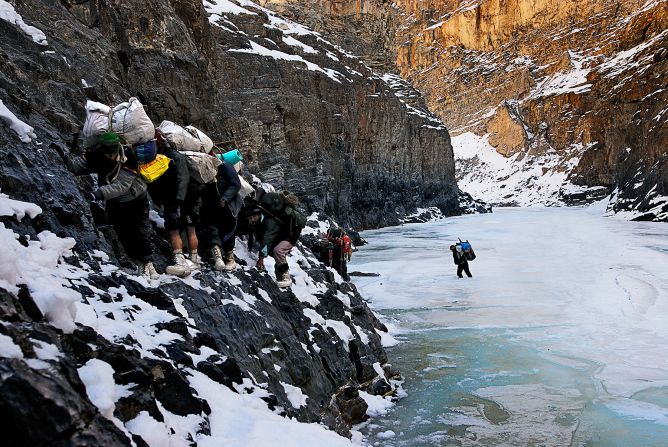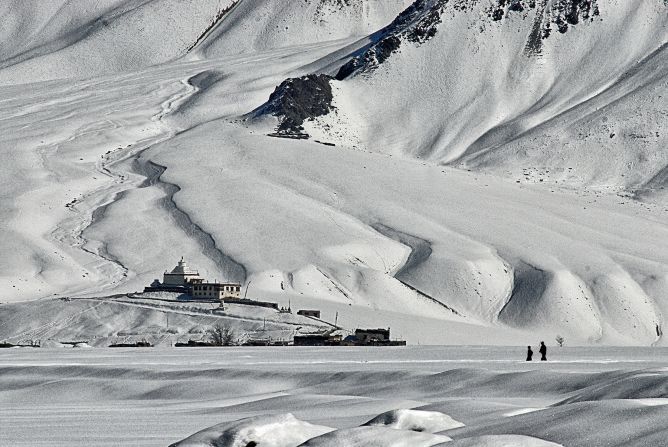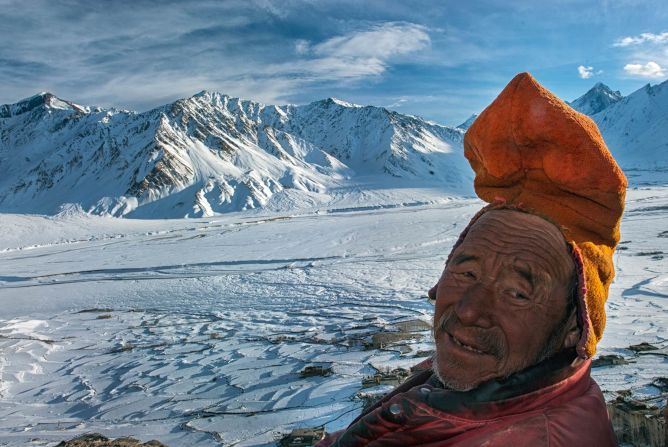Story highlights
When frozen in winter, India's Zanskar River provides the only land route for isolated villagers to reach Leh, the region's capital
The route through a dramatic gorge with frozen waterfalls has been dubbed the "world's wildest trek"
With an influx of adventure seekers and a new road, locals say the trek will disappear along with its traditions
Tundup Wangail still remembers the first time he set foot on the frozen Zanskar River 40 winters ago, as a five-year-old.
He remembers shivering in subzero temperatures, remembers how his father, in front of open fires in yawning caves, taught him that the cold was their ally.
How the frozen river offered them a lifeline to reach Leh, the capital of northern India’s Ladakh region, bordering the Himalayas, to sell goatskins, butter and copper utensils, and return with stocks for survival even when snow closed all land routes.
On the surface of it, little seems to have changed since then.
Or even since I walked this route for the first of several times in 2003.
Tundup and I sit shivering in a cave in front of an open fire, snow has swamped the mountain passes and the residents of the Zanskar – a remote Indian valley that remains cut off from the world for five months each year – still walk 90 miles (145 kilometers) on the frozen Zanskar, known as the Chadar (“sheet” in Hindi) in its icy avatar, to reach Leh.
They make the crossing so their children can reach school, or to visit relatives.
But looks, Tundup tells me, are deceiving.
“The changes are like the river that flows hidden under the ice.”
He should know.
Having travelled the Chadar first as a child and now as a postal official, Tundup has been witness to the changing character of this perilous winter route.
“The documentaries on the Chadar and our winter lifestyle changed everything,” he says.
With fame, decay
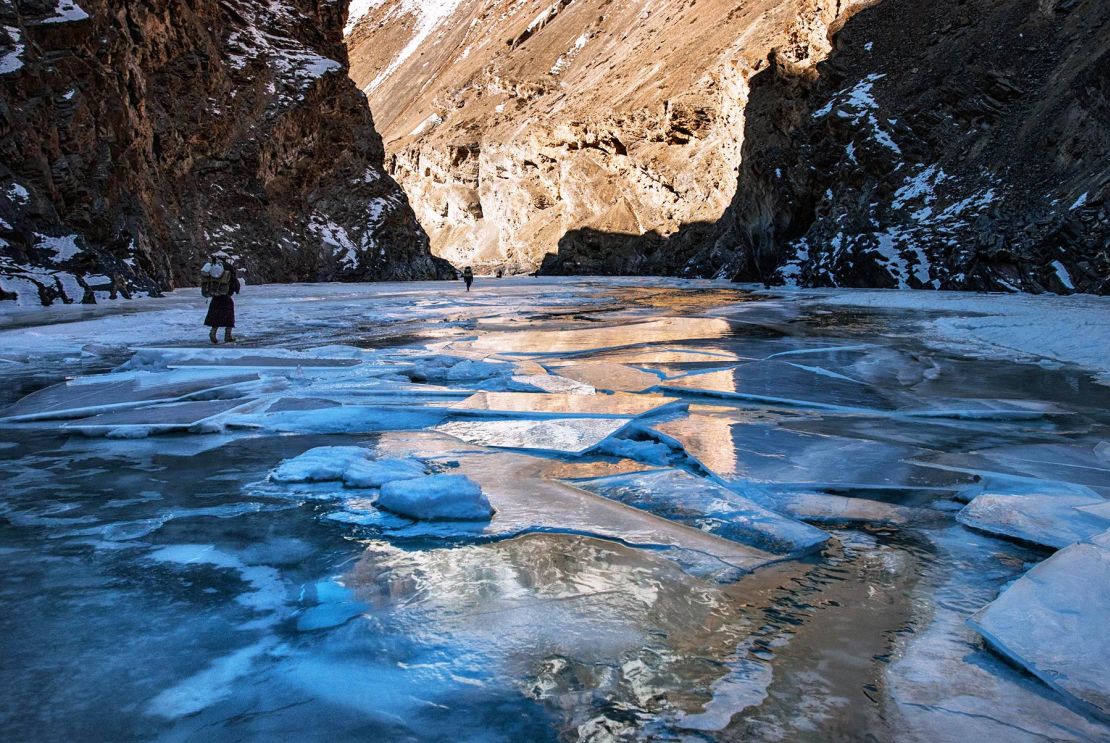
The Chadar achieved a level of noteriety after receiving coverage in documentaries, especially the BBC’s 2011 series “Human Planet.”
Guidebooks picked up where TV and video left off, building and cementing the route’s position as the ultimate adventure destination.
What was once a sacred crossing for the Zanskaris became for the world the “wildest trek.”
The Chadar became big business – a cottage guiding industry developed.
Selling the adventure was easy.
After all, there aren’t too many walks that pass through a dramatic gorge with frozen waterfalls, or where the route covers a road of ice that becomes a mirror for the sky.
The ever-present sense of danger of the ice giving way, and the primal thrill of sleeping in caves hewn by gushing water over centuries, not to mention subzero temperatures, does make it an eminently “do before you die” journey.
Which is how it almost turned out for me in 2007.
Near-fatal accident
That year, with the weather warmer than usual, the river remained liquid at many stretches.
More than halfway through the journey, we faced an unusually large patch of thaw.
Progress meant a climb up the gorge walls.
“Duck-walking” on ice for days meant my legs were wobbly on solid ground.
They gave way 60 feet (18 meters) above the river.
I tumbled all the way down.
My fall broke the flimsy crust of ice on the river.
Luckily, the padding in my camera bag kept me afloat.
Luckier still, a companion named Tashi was able to fish me out with the staff he was carrying.
He built a fire to keep hypothermia and death at bay.
He also congratulated me.
“The restless spirits of the mountains try to kill Chadar walkers once,” he told me.
“Now that you’ve survived, the spirits of Ladakh will always watch over you.”
I agreed with him then, as I do even today.
Last generation to know the road
Tashi and Tundup’s generation could well be the last to walk the Chadar.
On the heels of tourist popularity have come the compulsions of government security.
An all-weather road through the gorge is nearing completion.
The road, once it opens, will end the Zanskaris’ forced annual exile and enable them to hang up their walking shoes for good.
On the flipside, there’s the problem of overcrowding.
Chadar bookings have shot up in the past three years, according to Abdul Quayoom, who runs Altitude Adventure, a travel agency in Leh.
“The going’s extremely good,” he says. “But I can’t help wondering how much the river can take.
“To think, it’s going to be crazier once the road opens and carloads of tourist descend on Zanskar.”
Vanishing legends
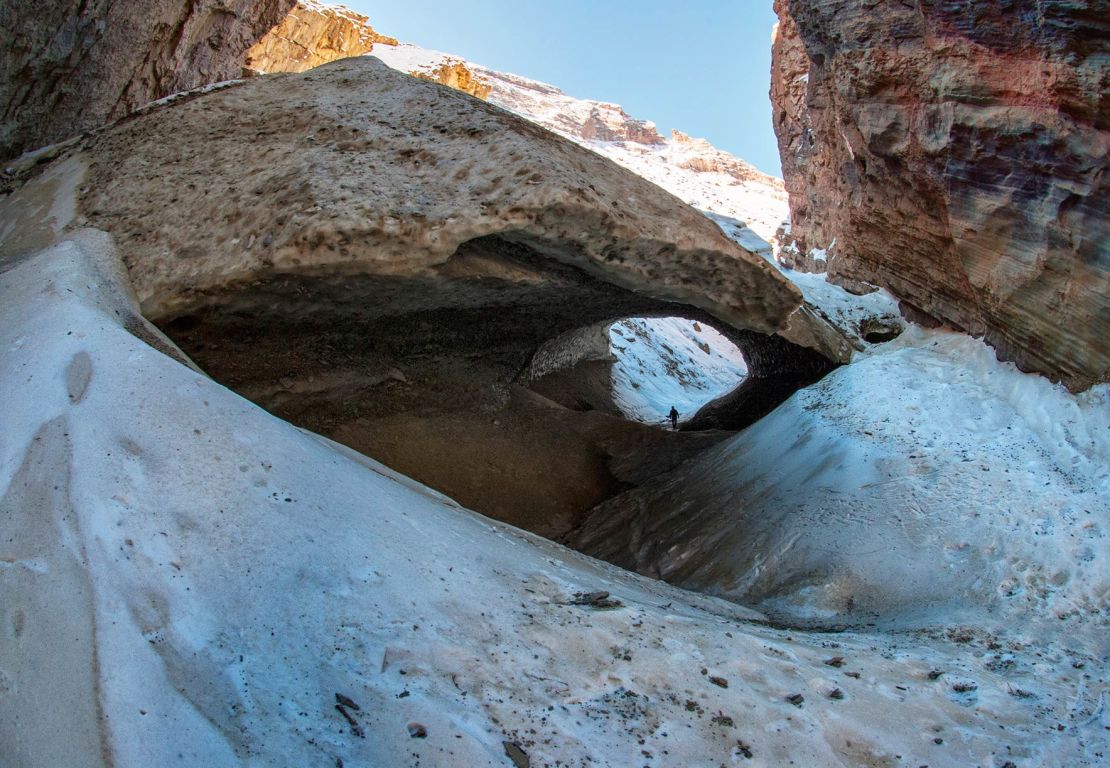
Tundup also worries about the tourists.
But his despair lays elsewhere.
“When bragging rights replace respect, bad things happen,” he says.
“For now, only our legends are dying.
“When children complain about the cold, we ask them to zip their jackets up. And none of them know how to judge the trustiness of ice by its color, or the tap-tap of sticks on it.”
Nor do they know the tale of the monk who angered the spirits for soiling the ice.
Such tales, and the morals they came wrapped in, have stood generations of Zanskaris in good stead on this frozen highway, where resources are scarce, death lurks at every step and teamwork is crucial.
But as the road advances, old beliefs will fall by the wayside.
Not many today believe that rolling empty bitumen barrels into the river will anger the spirits.
And some porters and tourists think little before littering the ice, or even relieving themselves on it.
Urinating on the ice pollutes the river, whose water the villagers drink.
I was in Ladakh last year when a landslide on the Chadar forced travel agencies to call off all trips for fear of a catastrophe.
Yet even as the science behind the phenomenon was discussed, some people spoke in hushed tones about the gods being angry.
The Chadar may have become a money spinner for many, but one story seems to have survived even in the face of modern development: the legend of benevolent spirits being driven away by the actions of inconsiderate men.
When the Chadar’s spirits depart, the story goes, they’ll take the freeze with them.
Sankar Sridhar is an award-winning photographer and travel writer who spends most of his time documenting the lives of India’s vanishing nomadic communities. He’s the author of “Ladakh Trance Himalaya.”
